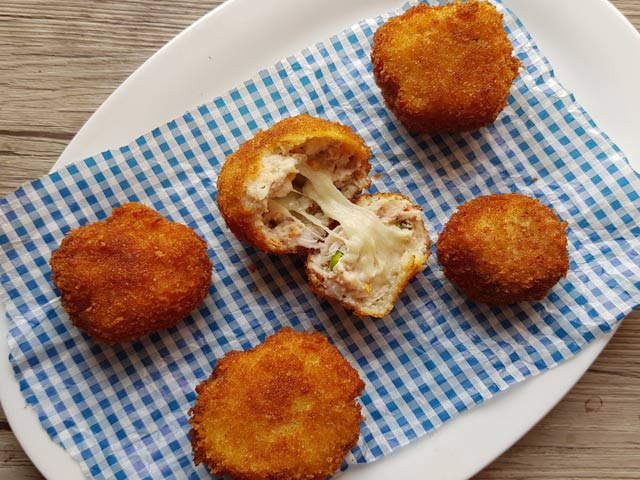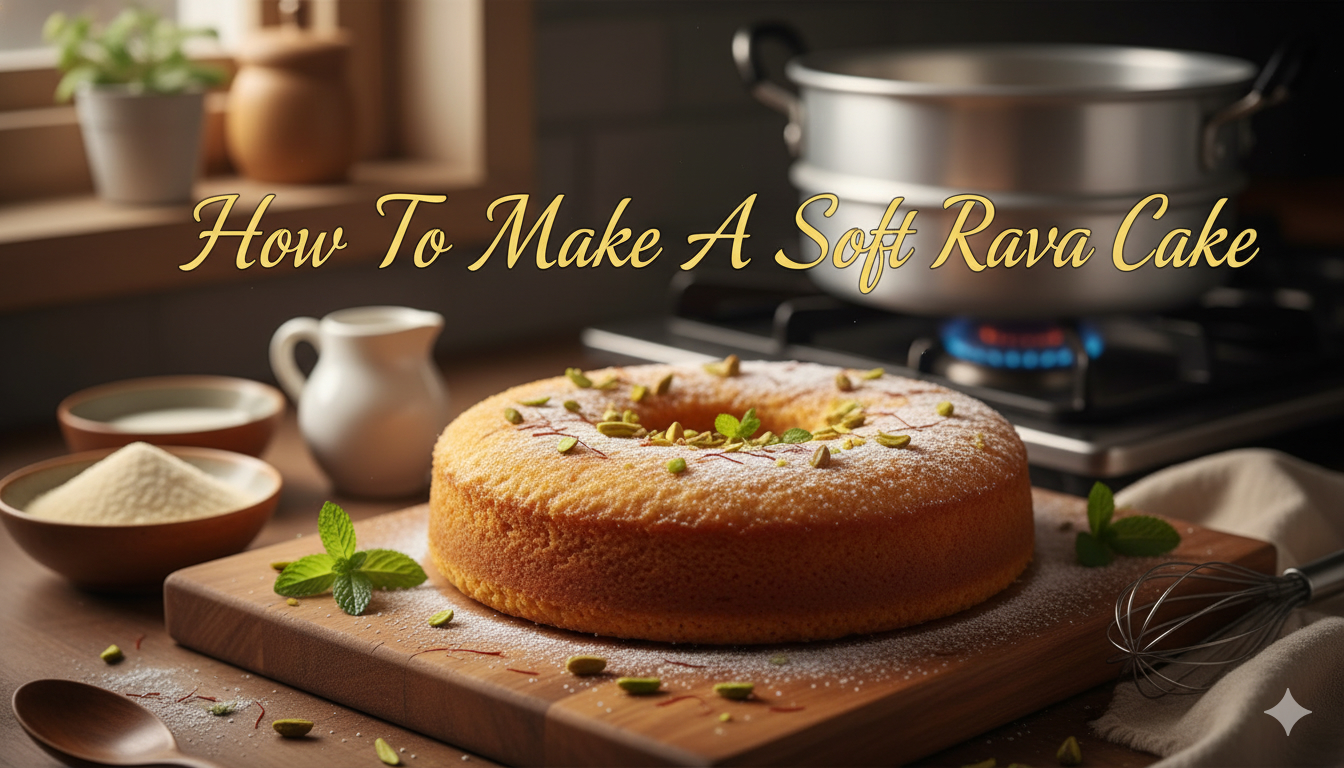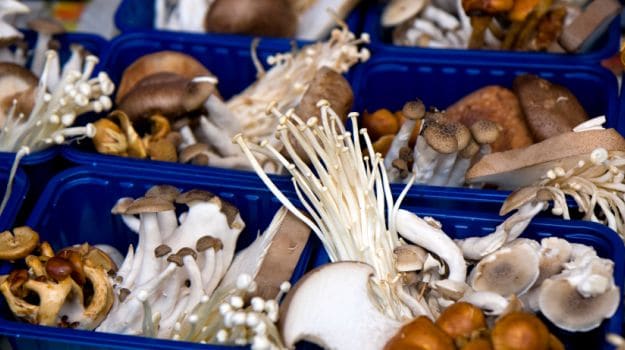Peculiar to look at and almost mysterious in nature, mushrooms are probably one of nature’s most intriguing creations. They are available in so many different shapes, textures, sizes and colours, and come to think of it, they are essentially fungus. As an ingredient, not only do they help make spectacular dishes, but can also bowl you over with their distinctive umami flavour. They can cost anything from Rs 20 to Rs 2000 depending on the variety you choose. Like cheese, mushrooms grow on you with time, as you broaden your repertoire trying out the different types.In the Indian markets, the most commonly available type is button mushrooms – small, with off-white coloured stalk and cap – which is used in stir-fries, curries, as pizza toppings, in pastas, as a snack, you name it! When you see a mushroom dish in the restaurants or at home parties, it will most likely include the button variety. But the truth is, they are quite bland in taste as compared to other varieties. So dare to explore other mushrooms, and we guarantee that you will be in for a pleasant surprise.Most gourmet stores offer a few exotic mushrooms in fresh as well as dried form. For the dried version, all you need to do is rehydrate them in water for a couple of hours and then use them to dish out various delicacies. As simple as that! They are easy to cook and blend well with other ingredients, herbs and spices.

Tips to Remember
1. Pick mushrooms that are firm, plump, without any slimy or bruised spots.2. Since they tend to absorb water quickly which could interfere with their flavour while cooking, the best way to clean them is wiping them with a damp cloth. But be very careful to ensure that all dirt and grits are removed.3. Fresh mushrooms should be stored in lose paper bags or vegetable zip-lock bags in the refrigerator. It is best to consume them within a week.4. The dried varieties should be stored in airtight containers. Rehydrate them in water and use immediately.5. While cooking mushrooms make sure that you don’t do so for too long. A quick stir-fry is the best way to enjoy their rustic flavours. Since they tend to seep out water during the cooking process, you can keep the flame on high and add in sauces and spices accordingly to enhance the final flavour.6. Some mushrooms have intense flavour while some are mild. While cooking the ones with intense flavour, use subtle ingredients to not interfere with the taste, and for the mild ones, you can use spicy sauces and pungent herbs to lend to its flavour.Picking MushroomsSo here’s a guide to trying out different mushrooms -1. Shiitake

Shiitake is a commonly used ingredient in East Asian cuisines, particularly Japanese. It is said that it contains many health benefiting properties including promoting longevity because of which the Chinese used it commonly in their ancient medicinal practices. Shiitake usually grows on trees such as oak, maple, chestnut, etc. although currently it is widely cultivated across the globe. It is medium-sized, brownish in colour and has a smoky flavour. Traditionally, it is used in miso soups or to spruce up the flavour in dashi or other broths. You can make a quick stir-fry with other greens and serve it as a side, top it on meat dishes, toss it while making noodles or fried rice, or load them up in burgers.2. Oyster

Oyster mushrooms readily come into the market during the autumn season, post the rains. The caps are quite large, almost scallop-like in shape, with gill-like patterns beneath. They are meaty in texture and have a slightly sweet flavour, almost reminiscent of star anise. They are also available in the dried form. Usually the stems are discarded because they are quite tough. You can use oyster mushrooms in stir-fries and noodles, or break them into small pieces and add them to sauces for an interesting edge to meat dishes. Point to note: add the mushrooms at the final stage of cooking to retain maximum flavour and texture. You can also sauté them in a little butter and have it with toasts for a satisfying breakfast treat.3. Morel

Popularly known as guchhi in India, morels are locally found in the north in the lower Himalayan region – Himachal Pradesh and Kashmir. It is one of the most expensive ingredients available in the markets because of its scarcity. It grows in shady forests floors and orchards, and is quite a hunt to spot them. The cone-shaped mushroom has intricate porous patterns and a deep, earthy brown colour. The flavour is intensely smoky and nutty, and should be paired with subtle ingredients to enjoy its taste. These mushrooms require thorough washing because of the intricate structure. There are many ways you can cook them – stuffed with cream cheese or mashed potatoes, added in pulao, pasta sauces, quiches, omelettes, or made into marmalades.4. Truffle

One of the most prized ingredients in the culinary world; truffles mostly feature in French, Italian, and other international haute cuisines. It is sought after for its intense flavour which only develops when the mushroom matures, which is why it has to be harvested at the right time. Since it grows beneath the ground, trained dogs are used to sniff out mature truffles. Truffles are mould-like, irregular in shape, and black or white in colour. The size can vary, which can be as small as a walnut or equivalent to a fist. The white truffles are more intense in flavour and hence valued more and prized exorbitantly. Usually, shavings of truffles are stored in oil to flavour it, which is then used to make pastas, stir-fires, or added in salads and pizzas. Or truffle shavings can be added to sauces, meat dishes, soufflés, omelettes, soups, etc for an instant flavour boost.5. Wood Ear

It has many monikers – Judas’s ear, jelly ear, cloud ear, black fungus, etc. True to its name, the mushrooms are ear-shaped, brownish to blackish in colour, and crunchy in texture. It is commonly found growing on Elder tree. Legend has it that since Judas was hanged on an Elder tree, it came to be known as Judas’s ear. It is known for its medicinal properties, and used commonly in Pan-Asian cuisines. It is subtle in flavour as compared to other mushrooms, and used in soups to make the most of its nutrients and also to add texture. It has a good ability to soak in flavours from other ingredients, and hence blends well in stir-fries and warm salads.6. Enokitake

Also known as enoki in short, it is a cluster of mushrooms that are thin and long stemmed, and with a small and shiny cap. They are usually off-white in colour, but the wild variety is very different, both in terms of colour and shape (it is bigger and orange-brown in colour). Enoki is also referred to as golden needle mushroom or winter fungus. It is used extensively in East Asian cuisines, where the mushroom stems are removed from the stalk and tossed into soups, noodles and stir-fries. They have a crisp texture and a mild flavour, and are usually added at the last minute of cooking because they are extremely delicate and overcooking tends to make them chewy.7. Portobello

Portobello mushrooms have a large, flat, circular-shaped cap which makes it great to stuff it with creamy fillings and grill it, or used it as a patty in burgers. They are easy to cook and have a nice, meaty texture. You can marinate the mushrooms in a little wine or spice mixes, and bake them too, stuffed with delicious fillings.8. Shimeji

Like Enoki, Shimeji is a cluster of mushrooms but with shorter stems. The caps are brown in colour and specked with intricate patterns, while the stems are white. They are commonly found in Japan and often referred to as beech mushrooms because they tend to grow on the fallen trees by the coastline. When stir-fried, the mushrooms develop a buttery and nutty flavour, and have a slight crunch. You can remove them from the stalk and pan-fry with other veggies or use them in noodles. You can also fry them and top them on meat curries or soups. They are high on umami compounds.9. Black Trumpet Mushroom These horn-shaped mushrooms look attractive on the plate, and also lend a nice crunch to the dishes. The inner surface is black in colour whereas the outer is grey. Loaded with flavonoids, they are a good source of anti-oxidants and are mostly available in the dried form in the markets. They are usually found growing along the river beds, ponds and swamps, in the decaying woods of fallen trees. One of the most popular ways of cooking them is dipping in tempura batter and deep-frying. You can also use it in pizzas, pastas, grilled chicken, seafood, etc. Remember to cook the mushrooms only for a few minutes.10. Porcini
These horn-shaped mushrooms look attractive on the plate, and also lend a nice crunch to the dishes. The inner surface is black in colour whereas the outer is grey. Loaded with flavonoids, they are a good source of anti-oxidants and are mostly available in the dried form in the markets. They are usually found growing along the river beds, ponds and swamps, in the decaying woods of fallen trees. One of the most popular ways of cooking them is dipping in tempura batter and deep-frying. You can also use it in pizzas, pastas, grilled chicken, seafood, etc. Remember to cook the mushrooms only for a few minutes.10. Porcini

A common ingredient in Italian cuisine, porcini quite resembles button mushrooms but has a brownish tinge. The stems could be stout or elongated, and when cooked, the mushrooms acquire a smooth texture. They are mostly used in soups or blanched and tossed into salads. You can also chop them and use as fillings, in omelettes, risottos, and pastas. Porcini mushrooms can make a risotto taste like a bite from heaven! In Europe, it is also eaten raw. Or slightly sautéed in butter and sprinkled with herbs. It has a delicate nutty flavour.
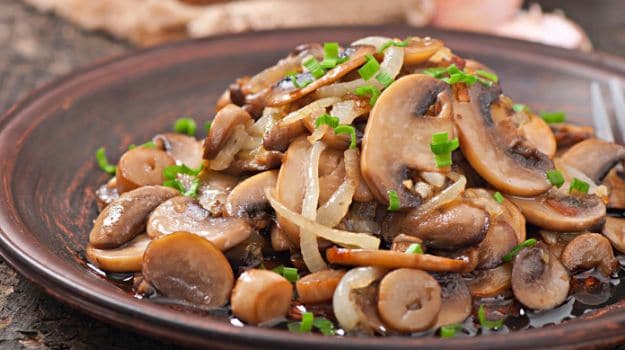
Tips to Remember
1. Pick mushrooms that are firm, plump, without any slimy or bruised spots.2. Since they tend to absorb water quickly which could interfere with their flavour while cooking, the best way to clean them is wiping them with a damp cloth. But be very careful to ensure that all dirt and grits are removed.3. Fresh mushrooms should be stored in lose paper bags or vegetable zip-lock bags in the refrigerator. It is best to consume them within a week.4. The dried varieties should be stored in airtight containers. Rehydrate them in water and use immediately.5. While cooking mushrooms make sure that you don’t do so for too long. A quick stir-fry is the best way to enjoy their rustic flavours. Since they tend to seep out water during the cooking process, you can keep the flame on high and add in sauces and spices accordingly to enhance the final flavour.6. Some mushrooms have intense flavour while some are mild. While cooking the ones with intense flavour, use subtle ingredients to not interfere with the taste, and for the mild ones, you can use spicy sauces and pungent herbs to lend to its flavour.Picking MushroomsSo here’s a guide to trying out different mushrooms -1. Shiitake
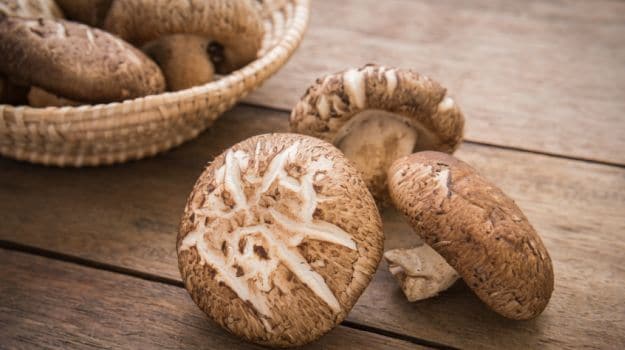
Shiitake is a commonly used ingredient in East Asian cuisines, particularly Japanese. It is said that it contains many health benefiting properties including promoting longevity because of which the Chinese used it commonly in their ancient medicinal practices. Shiitake usually grows on trees such as oak, maple, chestnut, etc. although currently it is widely cultivated across the globe. It is medium-sized, brownish in colour and has a smoky flavour. Traditionally, it is used in miso soups or to spruce up the flavour in dashi or other broths. You can make a quick stir-fry with other greens and serve it as a side, top it on meat dishes, toss it while making noodles or fried rice, or load them up in burgers.2. Oyster
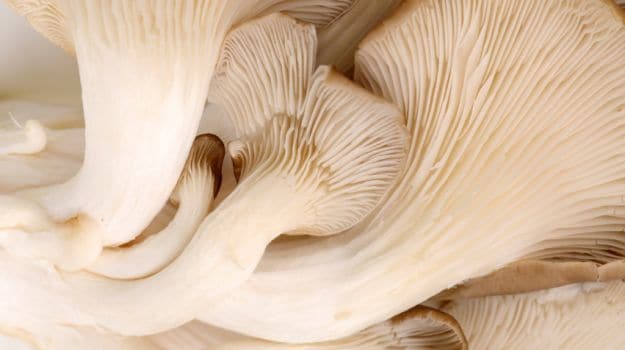
Oyster mushrooms readily come into the market during the autumn season, post the rains. The caps are quite large, almost scallop-like in shape, with gill-like patterns beneath. They are meaty in texture and have a slightly sweet flavour, almost reminiscent of star anise. They are also available in the dried form. Usually the stems are discarded because they are quite tough. You can use oyster mushrooms in stir-fries and noodles, or break them into small pieces and add them to sauces for an interesting edge to meat dishes. Point to note: add the mushrooms at the final stage of cooking to retain maximum flavour and texture. You can also sauté them in a little butter and have it with toasts for a satisfying breakfast treat.3. Morel
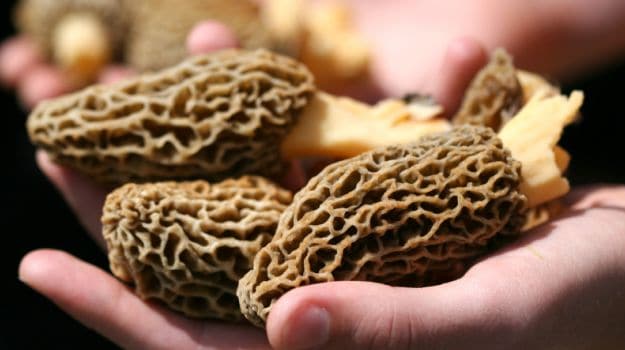
Popularly known as guchhi in India, morels are locally found in the north in the lower Himalayan region – Himachal Pradesh and Kashmir. It is one of the most expensive ingredients available in the markets because of its scarcity. It grows in shady forests floors and orchards, and is quite a hunt to spot them. The cone-shaped mushroom has intricate porous patterns and a deep, earthy brown colour. The flavour is intensely smoky and nutty, and should be paired with subtle ingredients to enjoy its taste. These mushrooms require thorough washing because of the intricate structure. There are many ways you can cook them – stuffed with cream cheese or mashed potatoes, added in pulao, pasta sauces, quiches, omelettes, or made into marmalades.4. Truffle
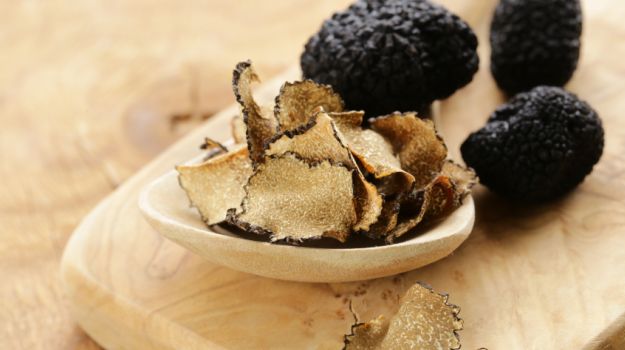
One of the most prized ingredients in the culinary world; truffles mostly feature in French, Italian, and other international haute cuisines. It is sought after for its intense flavour which only develops when the mushroom matures, which is why it has to be harvested at the right time. Since it grows beneath the ground, trained dogs are used to sniff out mature truffles. Truffles are mould-like, irregular in shape, and black or white in colour. The size can vary, which can be as small as a walnut or equivalent to a fist. The white truffles are more intense in flavour and hence valued more and prized exorbitantly. Usually, shavings of truffles are stored in oil to flavour it, which is then used to make pastas, stir-fires, or added in salads and pizzas. Or truffle shavings can be added to sauces, meat dishes, soufflés, omelettes, soups, etc for an instant flavour boost.5. Wood Ear

It has many monikers – Judas’s ear, jelly ear, cloud ear, black fungus, etc. True to its name, the mushrooms are ear-shaped, brownish to blackish in colour, and crunchy in texture. It is commonly found growing on Elder tree. Legend has it that since Judas was hanged on an Elder tree, it came to be known as Judas’s ear. It is known for its medicinal properties, and used commonly in Pan-Asian cuisines. It is subtle in flavour as compared to other mushrooms, and used in soups to make the most of its nutrients and also to add texture. It has a good ability to soak in flavours from other ingredients, and hence blends well in stir-fries and warm salads.6. Enokitake

Also known as enoki in short, it is a cluster of mushrooms that are thin and long stemmed, and with a small and shiny cap. They are usually off-white in colour, but the wild variety is very different, both in terms of colour and shape (it is bigger and orange-brown in colour). Enoki is also referred to as golden needle mushroom or winter fungus. It is used extensively in East Asian cuisines, where the mushroom stems are removed from the stalk and tossed into soups, noodles and stir-fries. They have a crisp texture and a mild flavour, and are usually added at the last minute of cooking because they are extremely delicate and overcooking tends to make them chewy.7. Portobello
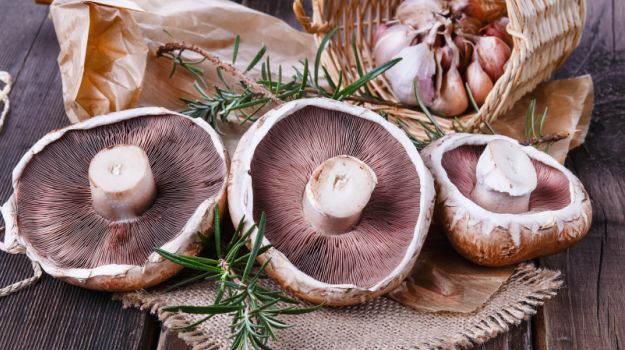
Portobello mushrooms have a large, flat, circular-shaped cap which makes it great to stuff it with creamy fillings and grill it, or used it as a patty in burgers. They are easy to cook and have a nice, meaty texture. You can marinate the mushrooms in a little wine or spice mixes, and bake them too, stuffed with delicious fillings.8. Shimeji
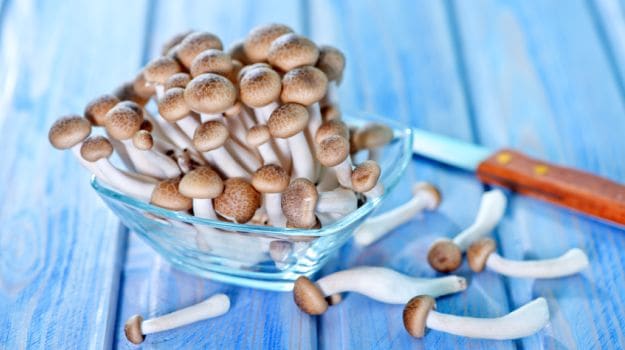
Like Enoki, Shimeji is a cluster of mushrooms but with shorter stems. The caps are brown in colour and specked with intricate patterns, while the stems are white. They are commonly found in Japan and often referred to as beech mushrooms because they tend to grow on the fallen trees by the coastline. When stir-fried, the mushrooms develop a buttery and nutty flavour, and have a slight crunch. You can remove them from the stalk and pan-fry with other veggies or use them in noodles. You can also fry them and top them on meat curries or soups. They are high on umami compounds.9. Black Trumpet Mushroom
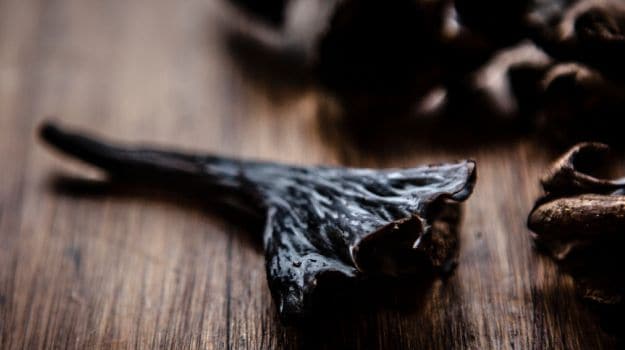 These horn-shaped mushrooms look attractive on the plate, and also lend a nice crunch to the dishes. The inner surface is black in colour whereas the outer is grey. Loaded with flavonoids, they are a good source of anti-oxidants and are mostly available in the dried form in the markets. They are usually found growing along the river beds, ponds and swamps, in the decaying woods of fallen trees. One of the most popular ways of cooking them is dipping in tempura batter and deep-frying. You can also use it in pizzas, pastas, grilled chicken, seafood, etc. Remember to cook the mushrooms only for a few minutes.10. Porcini
These horn-shaped mushrooms look attractive on the plate, and also lend a nice crunch to the dishes. The inner surface is black in colour whereas the outer is grey. Loaded with flavonoids, they are a good source of anti-oxidants and are mostly available in the dried form in the markets. They are usually found growing along the river beds, ponds and swamps, in the decaying woods of fallen trees. One of the most popular ways of cooking them is dipping in tempura batter and deep-frying. You can also use it in pizzas, pastas, grilled chicken, seafood, etc. Remember to cook the mushrooms only for a few minutes.10. Porcini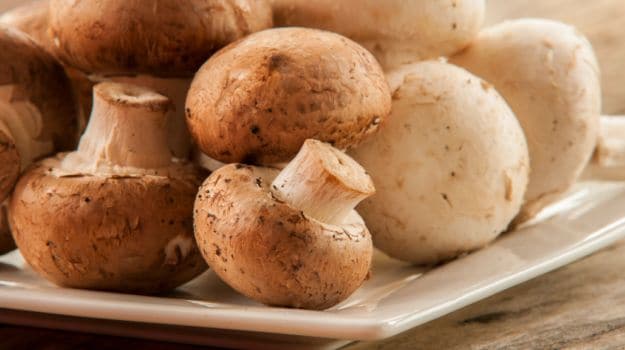
A common ingredient in Italian cuisine, porcini quite resembles button mushrooms but has a brownish tinge. The stems could be stout or elongated, and when cooked, the mushrooms acquire a smooth texture. They are mostly used in soups or blanched and tossed into salads. You can also chop them and use as fillings, in omelettes, risottos, and pastas. Porcini mushrooms can make a risotto taste like a bite from heaven! In Europe, it is also eaten raw. Or slightly sautéed in butter and sprinkled with herbs. It has a delicate nutty flavour.
Advertisement



